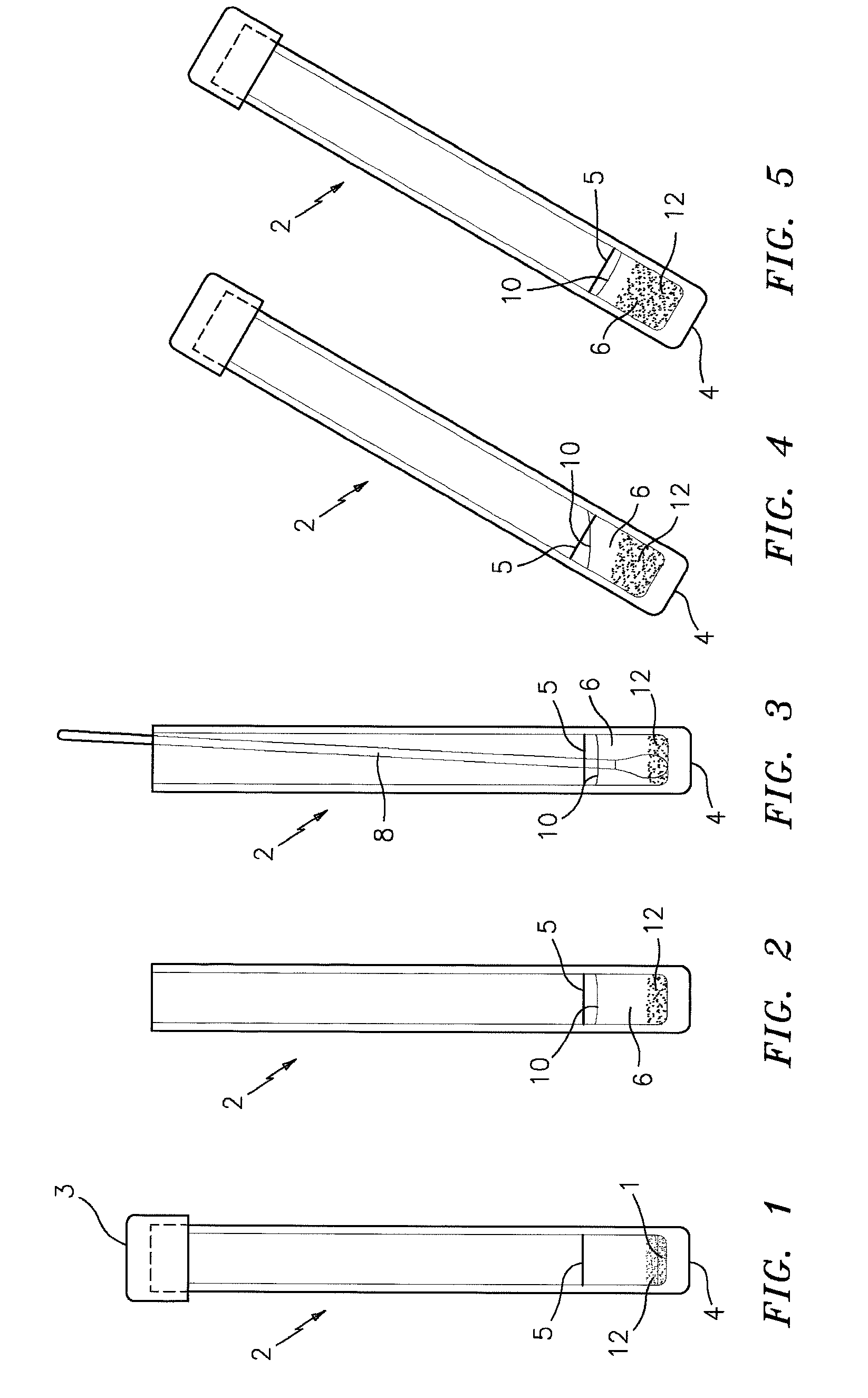Method for detecting the presence or absence of pathogenic Staphylococci in a test sample, including test mixture with micro particles
a staphylococci and test mixture technology, applied in the field of method and test mixture, can solve the problems of s. aureus /i>can also be a source of food poisoning, severe food poisoning, and serious infection
- Summary
- Abstract
- Description
- Claims
- Application Information
AI Technical Summary
Benefits of technology
Problems solved by technology
Method used
Image
Examples
Embodiment Construction
[0032]FIG. 1 is a side elevational view of a test tube denoted by the numeral 2 which preferably has a flat bottom 4 and a top closure 3, and which contains a dry powdered test mixture 1 which is formed in accordance with this invention for detecting the presence or absence of S. aureus in a sample; e.g., a first generational biological sample. The tube 2 is also provided with a reference line 5 which indicates the amount of water to be added to the tube 2 in order to properly hydrate the powdered mixture 1 for specimen sample testing. The drawings show the micro particles referred to above as numeral 12 in the sampling tube.
[0033]Acceptable hydrated test mixtures can be made using the following constituents in the ranges indicated, to create 15 ml of test mixture:
[0034]
Quantity per 15 ml of TestRange per 15 ml ofConstituentMixtureTest MixtureNitrate Broth7.5ml1.0 ml-9.0 ml Water7.5ml1.0 ml-9.0 ml Uracil10.0mg1.0 mg-20.0 mgSodium Pyruvate10.0mg1.0 mg-20.0 mgL-glutamine20.0mg5.0 mg-4...
PUM
| Property | Measurement | Unit |
|---|---|---|
| diameter | aaaaa | aaaaa |
| diameter size | aaaaa | aaaaa |
| time | aaaaa | aaaaa |
Abstract
Description
Claims
Application Information
 Login to View More
Login to View More - R&D
- Intellectual Property
- Life Sciences
- Materials
- Tech Scout
- Unparalleled Data Quality
- Higher Quality Content
- 60% Fewer Hallucinations
Browse by: Latest US Patents, China's latest patents, Technical Efficacy Thesaurus, Application Domain, Technology Topic, Popular Technical Reports.
© 2025 PatSnap. All rights reserved.Legal|Privacy policy|Modern Slavery Act Transparency Statement|Sitemap|About US| Contact US: help@patsnap.com

